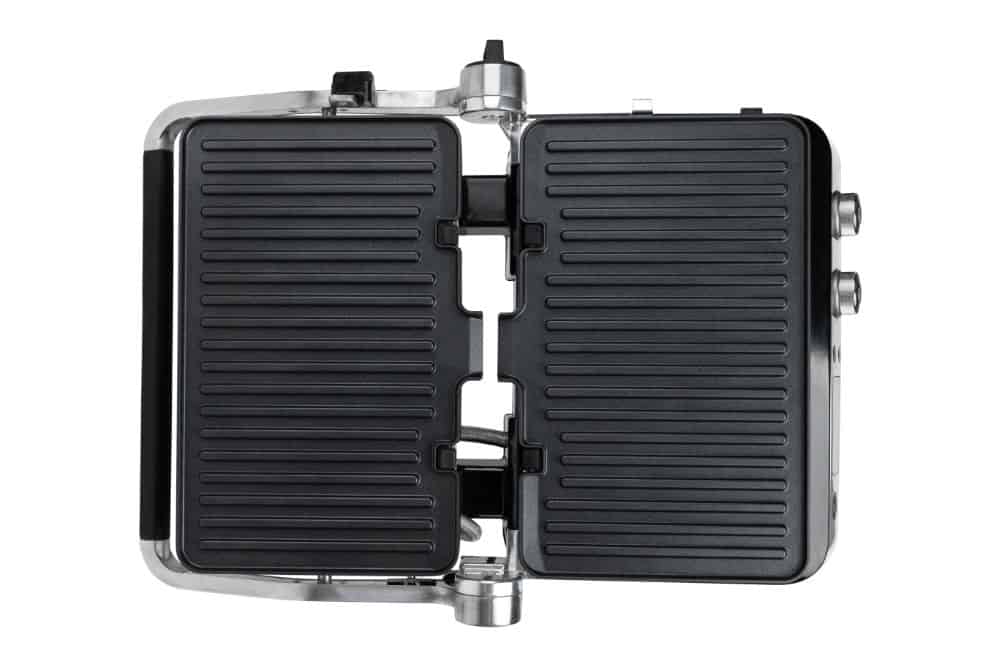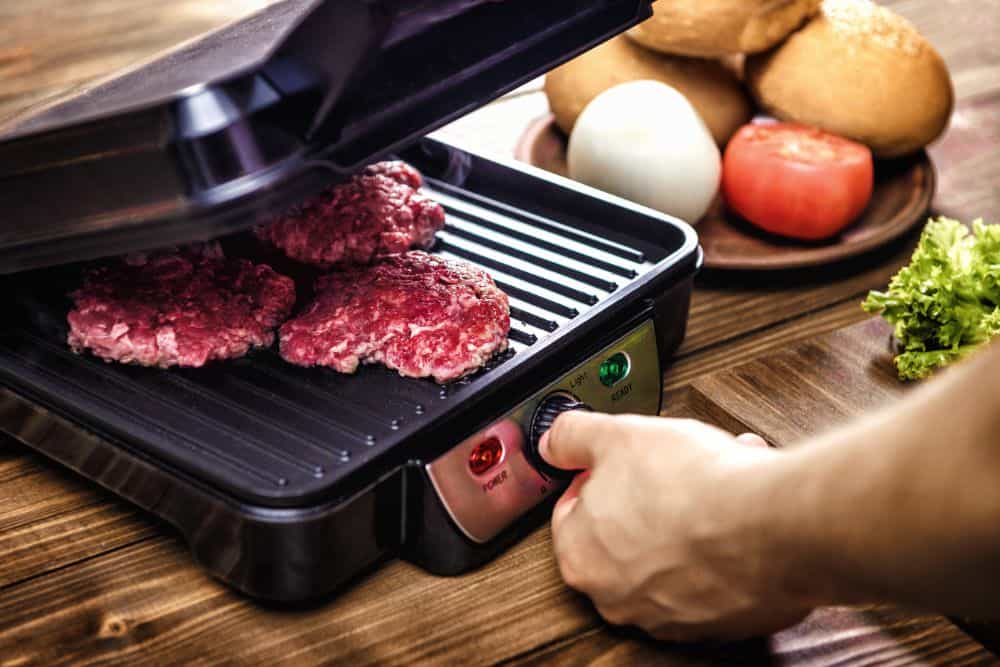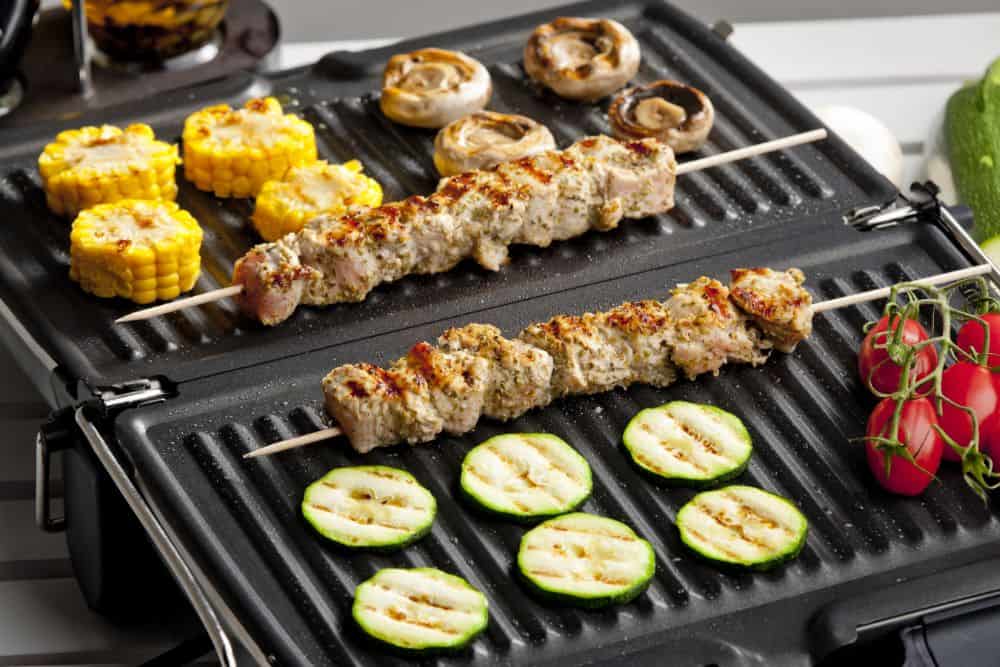Grilling is one of humankind’s oldest culinary obsessions. Ever since that fabled day tens of thousands of years ago, when the first caveman stuck some meat over a fire, took a bite, and released a hoot of joy, grilling has resided in the human psyche.
But there’s one small problem: what about would-be barbecuers who don’t have space for a grill?
Thankfully, there is a device that allows even apartment-dwellers (and otherwise grill-deprived) to enjoy the delectable flavors of grilled food: electric grills.
While electric grills can seem complex and hard to manage just like a gas grill but fear not. This article will analyze everything you need to know about how to cook on an electric grill.
Cooking on an Indoor/Outdoor George Foreman Electric Grill
The first step to cooking on an electric grill is the same as with any other grill--or any other piece of kitchen equipment. You familiarize yourself with your grill as much as possible and carefully consider what you are planning to cook.
Before you grill anything, you should know what kind of grill you’re working with. The two types of electric grills are open grills and contact grills, and although both produce delicious results, each works differently.
Open grills most closely resemble outdoor grills. The electric heating element applies heat to a single metal cooking grate and cooks similarly to a griddle--with direct contact between the food and the heated surface. This outdoor electric grill is a good choice if you’re looking to cook standard barbecue fares like burgers or fish.
Contact grills, on the other hand, are similar to panini presses. They work by pressing food between two heated plates. This is a stronger option if you want to cook a sandwich or other sturdy food--tender foods like meat and pork chops are liable to be crushed between the plates.
The next step in your grilling adventure is to select a spot to operate your grill.
Since an electric grill can only work when plugged in, you’ll need to be near an electrical outlet.
Beyond that, it is usually a good idea to grill in an area with good air circulation--an electric grill can produce steam and the aromas of cooking food, so you should use your grill in a place where those aromas won’t clog the air. The smell of salmon or other meats could stick to fabrics like curtains due to the oils that emanate from the grilling.
Finally, make sure that, before cooking, your grill is on an open surface without any clutter. Doing so has two benefits. First, it helps you run an orderly cooking space which is safer for everyone involved. Second, indoor grills can produce considerable heat, so prevent a fire hazard by eliminating any flammable detritus nearby.
Finally, before you start cooking, you must know what you’re in for on the other side of the grill. Electric grills are fantastic at cooking evenly, but at the end of the day, they are more similar to griddles and grill pans than outdoor grills.
The main difference between a charcoal grill and an electric grill is that electric grills don’t produce smoke (when used properly, anyway). Your food, while delicious, won’t have the distinctive smoky flavor of gas, charcoal, or wood-burning outdoor grill unless you apply seasoning like liquid smoke.
Open grills offer a cooking surface that requires a bit of finesse, but once you get the hang of it, they’re quite easy to operate.
Before turning the grill on, figure out whether you need to apply oil to the grates. Some grills will come with non-stick grill grate, while others need seasoning with a bit of cooking spray before use.
To start grilling in earnest, take a leap of faith and turn the machine on. This will be different depending on your specific model: some grills have a simple on/off switch. Some designs have you set a starting temperature, while others have dials indicating different heath levels. You can start with a temperature between 350 and 400 and experiment from there.
Once the grill is heated, add your food with a spatula or tongs. From there, cook according to your recipe’s instructions.
After your delicious food has come together, remove it from the grill, then turn the grill off and unplug it. You may need to consult the user’s manual to determine the best way to do so.
Let the grates cool completely. Now, the cleaning process begins: remove the grates and the drip pan, wash them thoroughly, and let them dry.
Finally, return them to the grill--they’ll be ready for your next indoor grilling session.

Many Electric Indoor Grills Open Up All the Way - Allowing You to Use Two Cooking Surfaces Simultaneously
If you want to give a nice toasty flavor to a hunky ham sandwich or bodacious BLT, you can’t go wrong with a contact grill.
To use a contact grill, you can use the same basic procedure as an open grill. Determine whether to grease the grill or not and if so, add a thin layer of cooking spray to each side of the press.
Next, turn the machine on. Some contact grills activate as soon as you plug them in, heating to their target temperature and remaining there until they’re unplugged. Others require you to set a temperature, and if this is the case, 425 Fahrenheit should be perfect for your food artistry.
Importantly, wait until the grill is fully heated to add your food--adding the food when the grill is still heating up will make it take longer.

Most Electric Grills Have the Option for You to Apply Heat From Below and Above to Evenly Cook Your Food
Once the grill is heated, open it, add your food, and close the grill down on it. Cook the food according to the recipe instructions. While you might be tempted to open the grill to gaze upon the treasures within, it’s essential to keep the grill closed to contain the heat--it’s a good exercise in patience!
When the food is cooked, carefully remove it from the grill with tongs or another implement--keep your fingers clear of the hot plates. Finally, turn off the grill by unplugging it or clicking the off button.
Last, but certainly not least, you have to clean it! Once each grill plate is completely cool and safe to handle, remove it and wash them according to the manufacturer’s instructions. Note that not all grill plates can be machine washed.
An indoor electric grill can be an excellent option for home cooks looking for specialized tools. Contact grills are especially useful since they provide a unique mode of toasting sandwiches.
Open grills are also excellent cooking implements, although it is essential to note that they serve a very specific purpose. Electric grill grates cook food thoroughly and impart attractive sear-marks, but they do not give the smoky flavor that outdoor grills do. Think of them more like grill-shaped hot plates.

Electric Grills Work Well for Cooking Both Meat and Vegetables
If you’re interested in adding a smoky flavor to electric grill food, you’re in luck! Simply add a bit of liquid smoke while you are cooking to impart a warm, rich flavor.
Alternatively, you can augment your grill with a smoker box. These devices hold wood chips and charcoal and can be placed on top of electric grill grates; if you put food on top of the grill, the smoke from the burning wood or charcoal will seep into the food and give it the taste you’d get outdoors.
Electric grills are a fabulous way to innovate your indoor cooking and save time. Despite their apparent complexity and difference from standard grills, it is easy to learn how to cook on an electric grill. Simply read the tips above and you’ll be an indoor grill master in no time!
